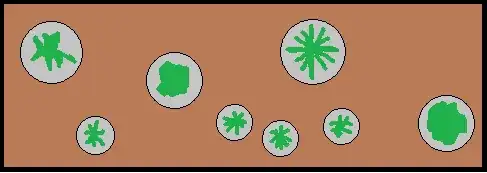Yes, you can use chipped wood, but chipped bark is a better alternative to chipped wood. Chipped bark breaks down slower, less likely to rob your plants of the nitrogen they need. Certain microbes break down organic matter, they feed off the nitrogen in the soil. If your wood is breaking down fast you will have an explosion of microbe growth. This explosion will not only rob the nitrogen from the wood chips, but the soil as well. The wood chips will have very little chance of being a soil conditioner.
I am uncertain what kind of access you have to ground bark. In Canada and the States, we would use primarily pines and fir. (The primary fir is Douglas Fir, which is not even a fir, an Abies, but Abies does work for your application. I believe you have better access to pine bark. Many people also use aged hardwood bark as well. Both barks have positives and negative. But, neither is necessarily better than the other. Hardwood mulch will leave the soil more alkaline and conifer mulch will leave the soil more acidic.
Rock is a pretty horrible mulch. It provides nothing for the soil. It allows weed seeds to get in between the stones and grow. It's impossible to pull up the weeds, roots and all if there is rock in the way. Yes, it does make adding more plants more difficult as well.
You are wrong on the slugs. If anything you will have more slugs. They will be able to hide under the mulch in the hot day and come out to feed at night. All mulch, even rock will give slugs a better chance of creating damage. If you had choose between eating wood or a nice juicy aloe plant, what would you choose?
If you can find ground bark from a conifer plant or aged hardwood. This does not mean you can not use wood chips. You can still use wood chips. You will just need to provide a synthetic fertiliser with high nitrogen content, like lawn fertiliser. Something with a nitrogen rate of 20% or more during the growing season.
If you have any more questions please ask.
